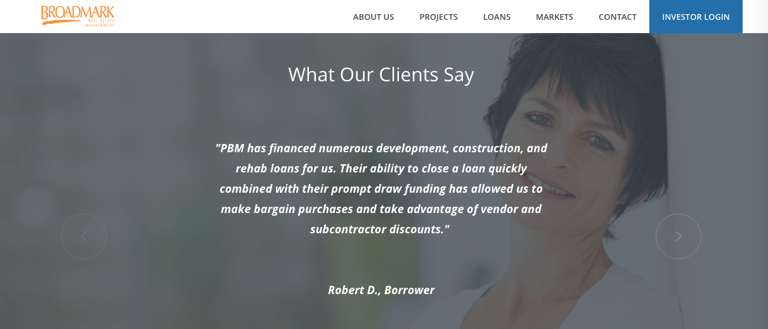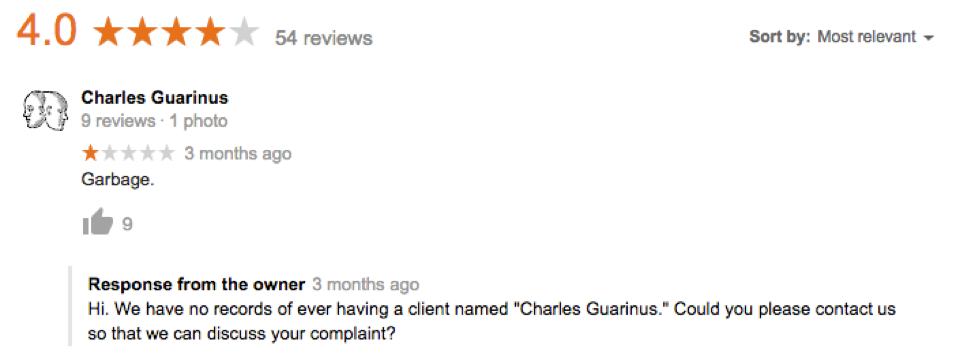

Updated January 2, 2025
There are specific steps to gaining and maintaining a positive online reputation. Consistency is a key element in being successful in managing a powerful digital presence.
Updated March 20, 2023
Having a relevant, current, and positive online reputation has a direct impact on bottom line sales.
Looking for a BPO agency?
Compare our list of top BPO companies near you
The team at Blue Ocean Global Technology is proven to help clients, large and small, to develop and protect technology assets in order to maintain organizational health and improve performance.
One key aspect of online reputation management is implementing a strategy for getting positive online reviews. What others have to say about your company is critical to your success, especially if you’re a small business.
Knowing that potential customers will research your business and products before interacting with your sales team should cause you to wonder what they will think after viewing search engine results pages (SERPs).
What does your online reputation say about you? When was the last time you checked to see if the information on various review platforms was correct? If you are not certain of your answers to those two questions, you may have already lost business without knowing why.
Don’t wait until someone else points out a negative review. Work actively and diligently to develop and maintain a positive online reputation – and keep happy customers.
By doing so, you will maximize the impact of positive press, build trust and customer confidence, enhance your public image as a local business in your area, improve customer retention, and attract top talent while increasing sales revenue.
Online reputation management is one of the single best things you can do for the success of your business, beyond providing an excellent product and exceptional service.
There are multiple sources of online reviews. These online reviews are key pillars for building a loyal customer base that will support your company’s marketing organically.
While it is rather simple to post favorable client reviews on your own site, it’s not likely that your site will be the first or only place potential clients look for information.
A quick Google search for “how many review websites are there,” revealed an astonishing 2,280,000,000 results! Among the top results are “18 Online Review Statistics Every Marketer Should Know,” “32 Customer Review Sites for Collecting Business & Product Reviews,” and “14 Alternative Business Review Websites.”
Included in these lists are sites such as Clutch, Amazon Customer Reviews, Angie’s List, Choice, Trustpilot, TestFreaks, Which?, ConsumerReports, TripAdvisor, Yelp, and Google My Business – places where customers can leave positive testimonials and bad reviews that could impact businesses of all sizes.
Whatever your type of product, websites like these may play a crucial role in determining the success of your business when it comes to attracting new customers.
Depending on how curious your buyers are and how much time they want to dedicate to research, they may seek out information about your product and your competition before making a purchasing decision. Further, most buyers want to see what your clients have to say about a specific product and the level of service provided.
Because of this interest, it is important that you perform similar research on yourself periodically. Know what your potential clients are seeing and what pre-conceived notions they may have about your product before speaking with them.
When you work effectively to gain positive reviews, your business will grow. The statistics below highlight the effect positive reviews have on both small and large organizations.
Thus, every review is critical for building trust, credibility, and reputation. Other statistics reveal how star ratings drive customers to you rather than the competition. Based on star ratings:
Based on these numbers, business owners need to ask two questions:
These questions are important to ask and answer. The bottom line is that positive reviews positively impact revenue.
Getting positive online reviews is not difficult. In fact, the strategies are quite simple. They just need to be committed to on a consistent basis. Here are six highly successful strategies:
While this tip may seem obvious, few businesses do it. Most consumers make a dozen or more buying decisions on a typical day. How many of those businesses have asked you for a review?
When you know your customers are happy with your product or service, ask them to submit a review. Make it easy for them. Ask: “How was your experience buying X product or receiving Y service?”
When they reply positively, ask if they’d mind posting that on your website or a review site you use. Most will agree to do it. It’s up to you to help them to complete the task.
If appropriate for your type of business, ask them to review your business while you’re speaking with them. If asking then is inappropriate, send them a follow-up email or thank you note and mention their intention to post a review. You might even include a link to the review site.
Statistics show that asking customers through email, in-person, and invoices/receipts are the best strategies to increase review collection.
Request positive reviews for use on your website, business profile, or social media posts only after receiving affirmative comments or feedback.
Asking soon after the buyer is satisfied allows you to realize the benefits of your goodwill with minimal effort because the experience is fresh in their minds.
You can gain more good reviews than your competition simply by the way you ask for them. For example, the word, “invite,” is softer than “ask” and the word, “feedback,” is more neutral than “review.” Vocabulary plays an important role in asking for reviews.
Moreover, educate your clients on why you are asking for a review. Remind them that without documenting their AAA+ or ★★★★★ experience, other potential customers may assume that your business is average.
Send review requests when it makes the most sense for your business. Perhaps when work is completed or after you have sent client thank you emails or letters. This will build your review volume and improve your search rankings.
If appropriate for your type of business, offer a small token of appreciation, such as a voucher, coupon, or discount for submitting a review. Clearly communicate that you will reward satisfied buyers for the time they invest to provide feedback about their experience by offering incentives.
A word of caution here: ideally, you want to earn reviews without offering rewards. Websites like Yelp filter out reviews that were provided because of incentives. Google also uses analytics to monitor review traffic.
Educate your employees and team leaders on the importance of providing an excellent customer experience and teach them how to ask for reviews effectively. Be willing to reward your employees for every posted review that they initiate.
You can also encourage your employees to leave referrals by showing how important customer feedback works with their performance in the role.
Let people know whenever you have received a positive review. Post them on your website. Include them in an email signature. Consider a review widget or direct feedback option on your website’s home page. Utilize review screenshots in your marketing materials, including brochures, email campaigns, newsletters, and videos.
Position positive client reviews so that your audience learns from satisfied clients across platforms.

Pyatt Broadmark Management shares reviews on their website, which is an effective digital marketing and reputation management strategy.
Highlighting your impressive reviews can convince potential customers that your business has high-quality products or services.
Keep your social media presence active on platforms to which your ideal clients gravitate. These may include the most popular ones such as Twitter, LinkedIn, Facebook, and YouTube.
Include reviews between your other informative posts as social proof that your business can be trusted. You never know when a point made by a happy client will be the trigger for someone else to become a new client. An engaging social media feed will keep you top of customers’ minds and amplify positive brand equity.
One negative review can prompt a loss of 22% in the search list of your potential customers.
Follow up with each negative reviewer. If the customer had a bad experience, thank them for their feedback, apologize with sincerity, and then work on a satisfactory solution.
When you’re able to turn that negative review into a positive one, ask permission to post the fact that the issue was resolved. The key is to act immediately to convert the negative review into a positive one.
After receiving a negative review, take the time to respond tactfully. Below is an example of a company responding respectfully to a poor review:

Replying in earnest to an unfavorable or bad review will show readers that you care. It may also transform a negative digital asset into a positive one.
No matter your type of business, the reality is that online reviews directly impact bottom lines. To maintain your reputation, it is imperative that you control what potential clients find online about you, your company, and your products. If you need help curating reviews, hire an experienced BPO company to support your vision. Do everything that is ethically within your power to increase your positive online presence.


